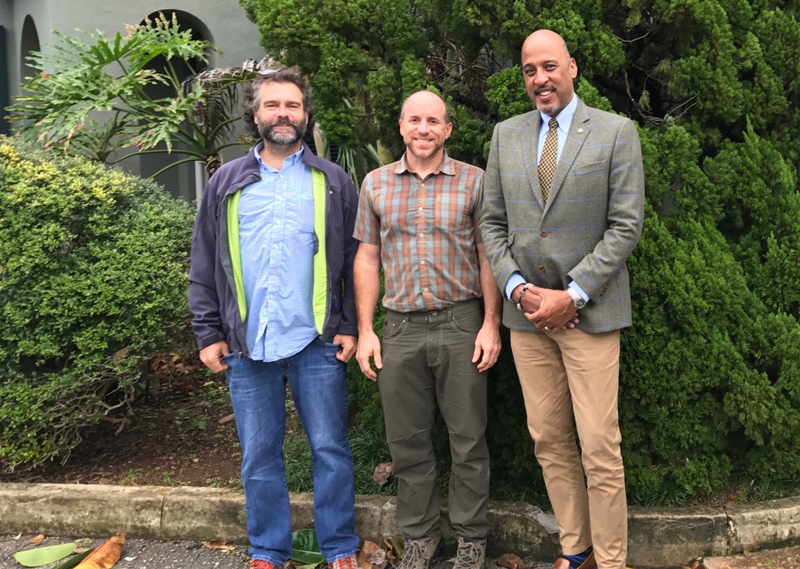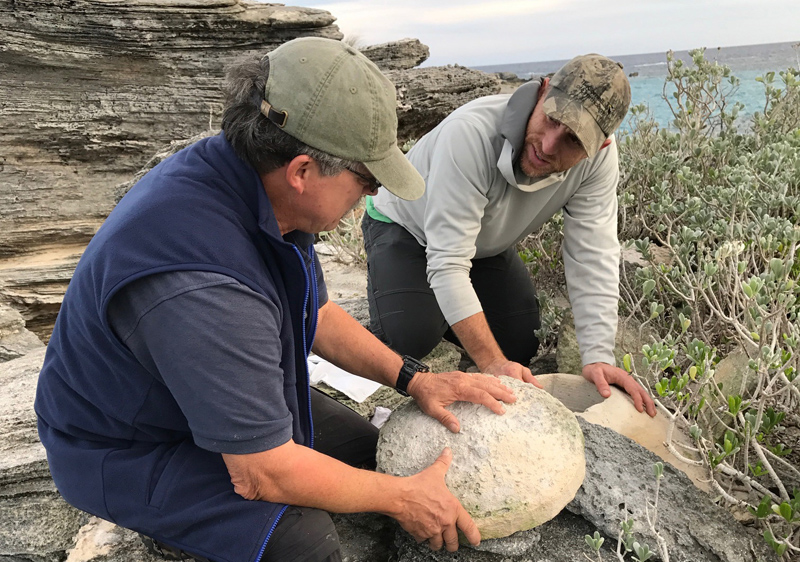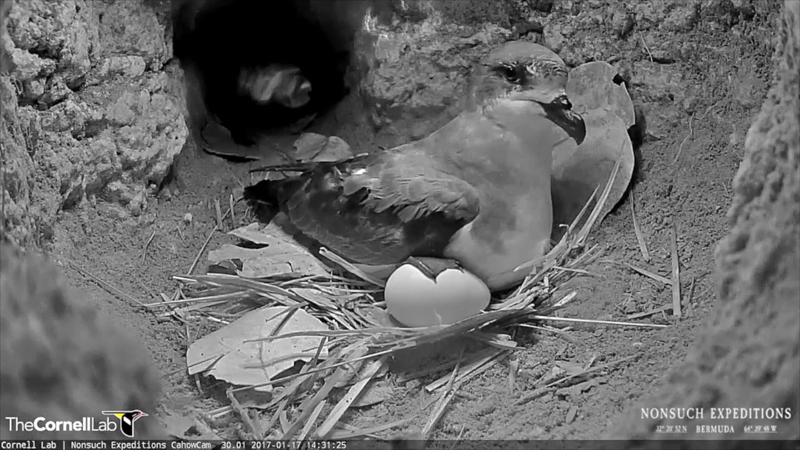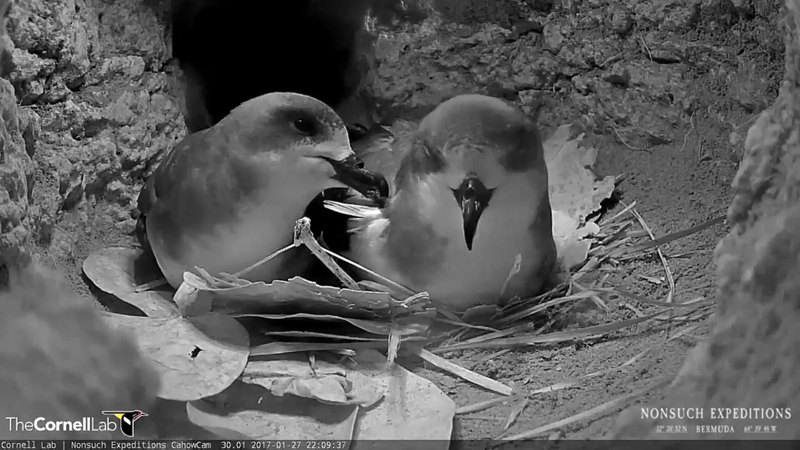Nonsuch Expeditions Partners With Cornell Lab
Over the past four Cahow nesting seasons, LookBermuda’s award-winning Nonsuch Expeditions CahowCam has broadcast from the underground nesting chambers of the second rarest seabird on the planet: the critically endangered, endemic, Bermuda Petrel or “Cahow”.
Numerous “first time documented” events were filmed during this period including the hatching of a Cahow chick that was live-streamed to the conservation team, bird watchers and classrooms around the world.
Nonsuch Expeditions leader and CahowCam designer J-P Rouja: “Our worldwide audience has been growing organically from year to year, with several thousand viewers watching when the chick hatched this past spring and several hundred thousand minutes of video streamed throughout the season.
“To take this to the next level we reached out to the Cornell Lab of Ornithology’s Bird Cams project, an effort that has created an extensive network of live streaming bird cams with an audience of millions of viewers and an emphasis on education and research.”
“We’re excited to announce that Nonsuch Expeditions has partnered with the Cornell Lab, allowing us to bring a renewed focus on the Cahow and other conservation efforts in Bermuda, providing a more interactive streaming experience and greater exposure to new audiences.
“In preparation, we spent several days over the Christmas break working with head Terrestrial Conservation Officer Jeremy Madeiros excavating around the underground burrow where we used a chainsaw to cut a vertical shaft in the limestone alongside the chamber then drilled a horizontal shaft into the chamber to give the new camera a nest level view into the burrow.”
“The Cornell Lab’s Bird Cams project leader Charles Eldermire was very positive when we proposed the partnership, remarking that, “Given their precarious future and their out- of-sight lifestyle, the Cahows seemed like a perfect fit for the Bird Cams. The previous efforts and expertise of the Nonsuch
“Expeditions and Conservation Services teams made us even more confident about the opportunity that this partnership presented.”
“Eldermire visited Bermuda this past November to get a better idea of the scope of the Cahow conservation effort. During three days of meetings, checking nests, and troubleshooting technology, he met with important stakeholders and leaders for Cahow conservation and consulted with Department of Conservation Services biologists and Nonsuch Expeditions team members to help develop a plan for the coming season.
“We’re really excited to be sharing the hidden world of the Cahows with an even wider audience, and to collaborate with the Nonsuch team to create meaningful experiences for viewers that raise awareness about the continued need for conservation of the species.”
Environment Minister Cole Simons stated, “his collaboration with The Cornell Lab of Ornithology brings the worldwide web of viewers to Bermuda on a daily basis to witness, as Jane Goodall characterized the project, “a reason for hope”—an ongoing successful conservation and restoration project, which is a rarity in today’s world.
“Fifty years of care and commitment by the Bermuda government, scientists, donor partners and the people of Bermuda can now be witnessed, through cutting edge communications technology pioneered here in Bermuda by LookBermuda.
“This allows us to demonstrate our commitment and success to the world. It heralds a new era of international partnership for Bermuda, and is an example of cooperation that is needed across all of the natural resource management challenges we face today. With the right partners and level of commitment, hopefully they can all be as successful and promising as the Nonsuch Island Cahow project.”
J-P Rouja said, “Through this new Cornell collaboration with the ongoing support of the Bermuda Government, The Ascendant Group, internet support from One Communications and our other Sponsors we are now able to better showcase the Department of the Environments’ ongoing efforts being led by Jeremy Madeiros.
As of the end of January the new collaboration has live streamed the return of the Cahows and subsequent laying of their single egg which is expected to hatch in March. Thus far this season 117 pairs have been verified putting us on track for a record.
Please visit the CahowCam page [here] to view the live video stream and highlights from the past nesting seasons.
Read More About
Category: All, Environment, News








What a great storey. I have been following the hard work that Jeremy has been doing to save the last remaining Cahows. I was lucky enough to visit Nonsuch four years ago whilst in Bermuda from England. The live pictures are stunning.